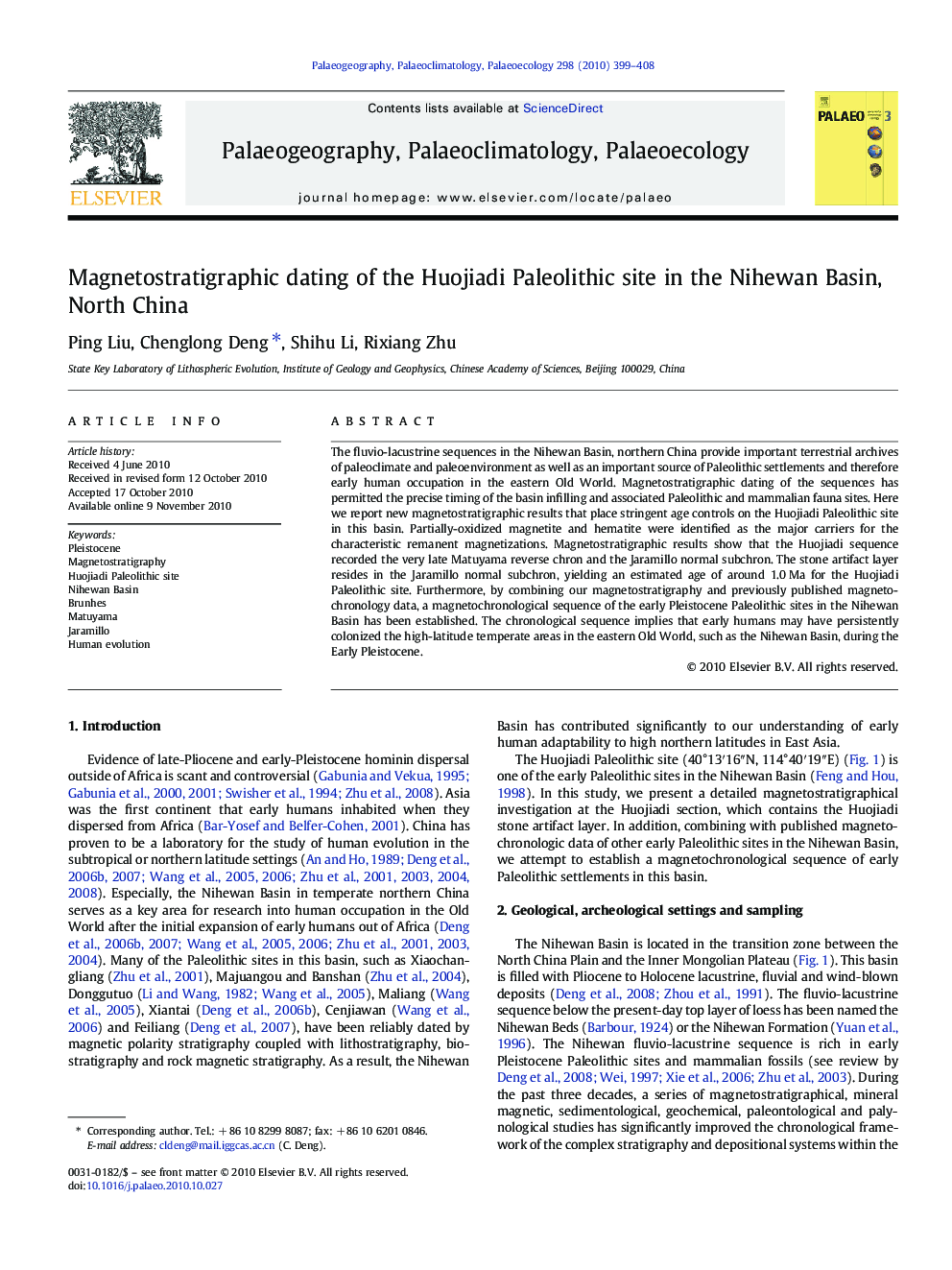| Article ID | Journal | Published Year | Pages | File Type |
|---|---|---|---|---|
| 4467431 | Palaeogeography, Palaeoclimatology, Palaeoecology | 2010 | 10 Pages |
The fluvio-lacustrine sequences in the Nihewan Basin, northern China provide important terrestrial archives of paleoclimate and paleoenvironment as well as an important source of Paleolithic settlements and therefore early human occupation in the eastern Old World. Magnetostratigraphic dating of the sequences has permitted the precise timing of the basin infilling and associated Paleolithic and mammalian fauna sites. Here we report new magnetostratigraphic results that place stringent age controls on the Huojiadi Paleolithic site in this basin. Partially-oxidized magnetite and hematite were identified as the major carriers for the characteristic remanent magnetizations. Magnetostratigraphic results show that the Huojiadi sequence recorded the very late Matuyama reverse chron and the Jaramillo normal subchron. The stone artifact layer resides in the Jaramillo normal subchron, yielding an estimated age of around 1.0 Ma for the Huojiadi Paleolithic site. Furthermore, by combining our magnetostratigraphy and previously published magnetochronology data, a magnetochronological sequence of the early Pleistocene Paleolithic sites in the Nihewan Basin has been established. The chronological sequence implies that early humans may have persistently colonized the high-latitude temperate areas in the eastern Old World, such as the Nihewan Basin, during the Early Pleistocene.
